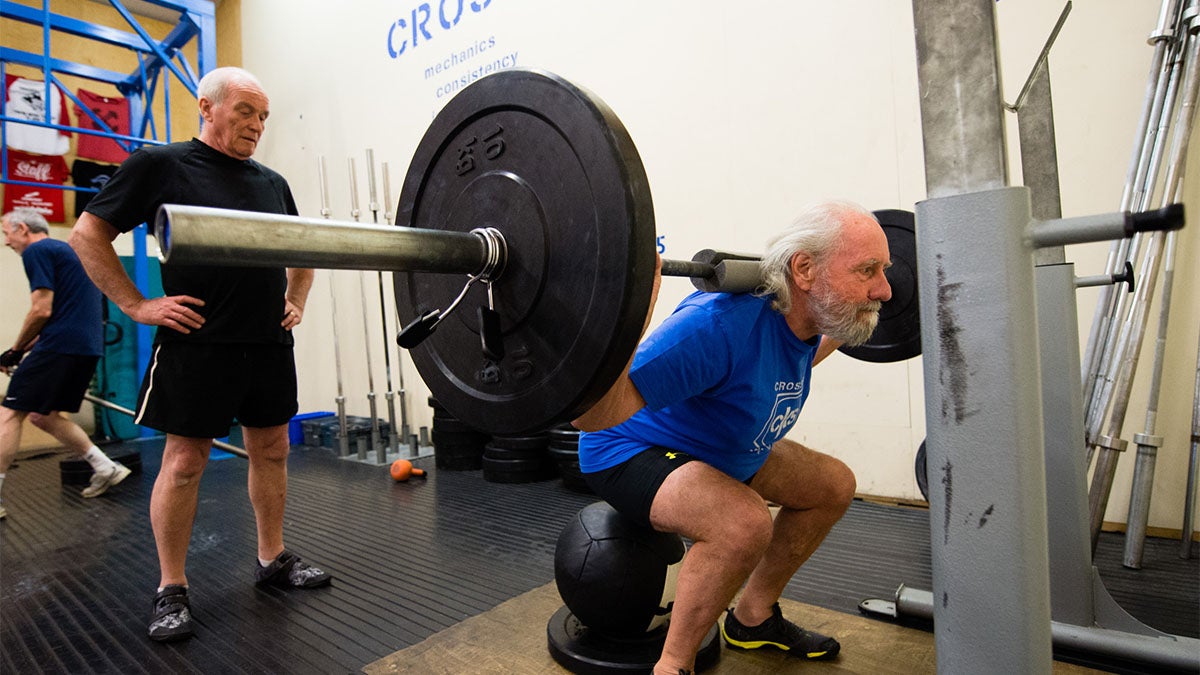What is the best way to stay healthy while Crossfit training?

As New Year's resolutions go, getting fit is at the top of the list. Whether it is running or swimming or going to the gym, millions of people are looking at ways to get in shape and Crossfit is likely getting a tryout.
Since founder Greg Glassman opened the first CrossFit gym in 2001 in Santa Cruz, Calif., the one-time exercise fad has turned into an international fitness craze. The fitness chain has over 13,000 gyms in more than 120 countries. To put that into perspective, it’s direct competitor, Planet Fitness has 1,500 locations across the United States.

CrossFit has gained an almost cult-like following: More than 4 million people regularly participate in weekly CrossFit training regimens. The CrossFit Games, the official competition platform for the sport, has become “one of the fastest growing sports in America,” according to Forbes. Exercise junkies are drawn to the high-intensity nature of these workouts, and the results they garner while less gifted athletes love the camaraderie that comes with hard work in the CrossFit “box,” or gym.
Typical CrossFit workouts consist of barbells being thrown around, kettlebells swinging, lots of squats and functional movements, and above all, maximum effort. These exercises are completed quickly, repetitively, and with little to no recovery time in between sets.
In general, high-intensity interval training (HIIT) regimens are designed to be extremely rigorous. By using functional movements and exercises such as gymnastics, weightlifting, running and rowing, CrossFit prepares its followers to be more well-rounded athletes in significantly shorter amount of workout time than traditional, moderately intense workouts.
“Our specialty is not specializing,” the CrossFit official webpage promotes. “While CrossFit challenges the world’s fittest, the program is designed for universal scalability, making it the perfect application for any committed individual, regardless of experience.”
The nature of the workout continues to bring people back. While not every athlete in the gym is doing the same weight or completing exercises at the same pace, every athlete is giving 100 percent. Combined with the social aspect of working out in a large group of usually up to 20 people, the strenuous workouts bring everyone together in a unique way.
As the rise of this relatively new workout regimen took over exercise enthusiasts across the world, its critics also rose. Without a large base of historical data to draw upon, research regarding the physical health implications of high-intensity interval training has been scarce until recently.
Several recent studies have highlighted potential health risks, including a 2013 study produced by the Consortium for Health and Military Performance. The study claims while there are documented, positive influences on body composition and physical fitness, “disproportionate musculoskeletal injury risk from these demanding programs… result[s] in lost duty time, medical treatment, and extensive rehabilitation.”
However, due to the larger time period and athletes available for study, more research about both the positive and negative effects of CrossFit training continue to be published every day.
A recent study by the Orthopaedic Journal of Sports Medicine found that while CrossFit has been highly scrutinized for being conducive to shoulder, back and leg injuries, there is little evidence to prove a higher incidence of injury than other training methods.
Out of the 3,049 people studied between 2013-17 who engaged in CrossFit training, only 30.5 percent of participants recorded an injury of some sort. Most of the injuries recorded were of trainees that participated in CrossFit for less than a year and trained fewer than three times a week.
Also, when training without a fitness professional or licensed CrossFit trainer, the incidence of injury greatly increased. As a result, researchers suggest fitness professionals come up with beginner programs that reinforce good form and tendencies early in the CrossFit careers of athletes.
A recent study from the University of Rochester found that 14 percent of CrossFit trainees studied experienced injuries when in the constant presence of a trainer. That number rises to 31 percent when accompanied by a trainer only some of the time.
Primary causes of injury were found to be because of incorrect form due to improper teaching of workout techniques or simply overuse of muscle groups and exertion by those that didn’t have the physical capacity yet for such grueling and intense workouts.
“People think if you do CrossFit you will get injured–– that’s not the case,” said Dr. Grayson Wickham, doctorate of physical therapy at the University of Wisconsin-Madison. “It’s not CrossFit that injures people; it’s that CrossFit is a demanding way to work out. You need a coach that lets you know what you are and are not ready for. If you have an ego and no coach telling you to tone it back, you could be in trouble.”
Ross Andrews is a senior journalism student at Arizona State University
Related Articles
Working on your fitness: Less just might be more when it comes to physical activity
Study shows evolution of fitness training from functional to high tech
Sparta Science uses jump tests to prevent injuries
More than 1 in 4 people across the world don't get enough exercise, study says

